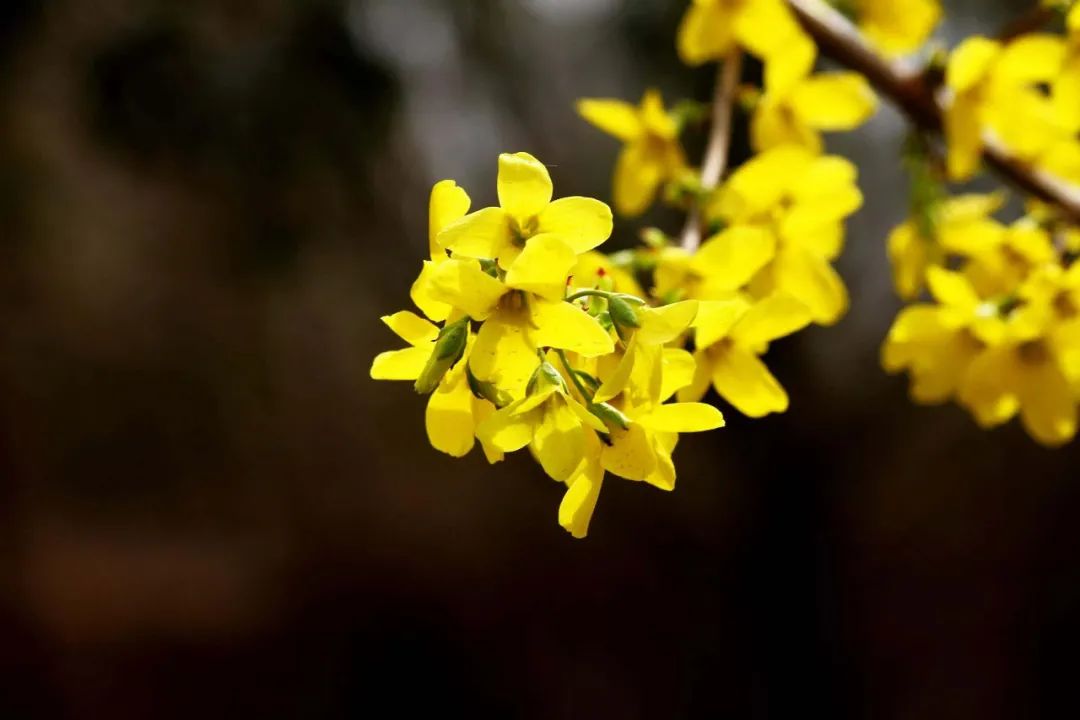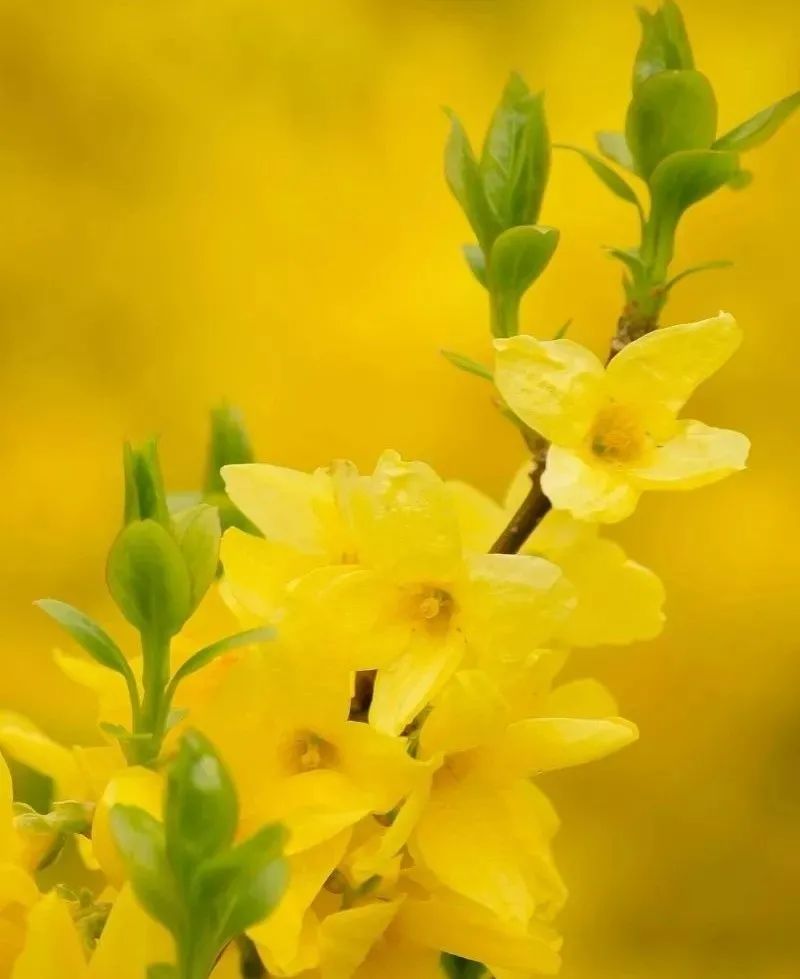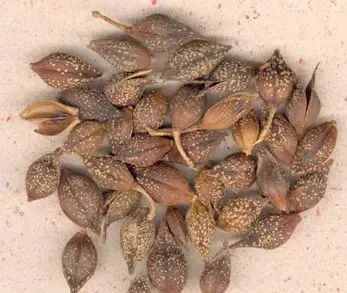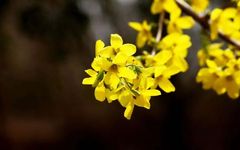Lian Qiao (连翘)

This herb is the dried fruit of the plant Forsythia suspensa (Thunb.) Vahl, belonging to the Oleaceae family. It is primarily produced in Shanxi, Henan, Shaanxi, Hubei, and Shandong provinces. The fruits are harvested in autumn when they are initially ripe and still green, cleaned of impurities, steamed, and dried, commonly referred to as “Qing Qiao”; when the fruits are fully ripe, they are harvested, dried, and cleaned of impurities, known as “Lao Qiao” or “Huang Qiao.” After harvesting Qing Qiao, it is immediately steamed and dried, and the seeds are separated for use as “Lian Qiao Xin.” It is used in its raw form.
【Properties】Bitter, slightly cold. It enters the Lung (肺), Heart (心), and Small Intestine (小肠) meridians.【Functions】Clears heat and detoxifies, reduces swelling and disperses nodules, disperses wind-heat.【Applications】1. Carbuncles, lymphadenitis, mastitis, erysipelas This herb is bitter and cold, with functions similar to Jin Yin Hua (金银花), excelling in clearing heart fire and detoxifying sores, and can also dissipate carbuncles and swellings. Therefore, it has been referred to as the “sacred medicine for sores”. For treating carbuncles that are red and swollen but not yet ulcerated, it is often combined with Chuan Shan Jia (穿山甲) and Zao Jiao Ci (皂角刺), such as in the modified Xiao Du Yin (《外科真铨》); for treating carbuncles with pus, redness, and ulceration, it is commonly used with Mu Dan Pi (牡丹皮) and Tian Hua Fen (天花粉), as in Lian Qiao Jie Du Tang (《疡医大全》); for phlegm-heat accumulation and lymphatic nodules, it is often combined with Xia Ku Cao (夏枯草), Zhe Bei Mu (浙贝母), and Xuan Shen (玄参) to clear the liver, disperse nodules, transform phlegm, and reduce swelling; for mastitis with swelling and pain, it is often used with Pu Gong Ying (蒲公英), Zi Hua Di Ding (紫花地丁), and Lou Lu (漏芦); if there is blood-heat toxicity with erysipelas, it can be combined with Da Qing Ye (大青叶), Ban Lan Gen (板蓝根), and Zi Hua Di Ding.2. Wind-heat cold, initial stage of warm disease, heat entering the Ying level, high fever with thirst, delirium with rashes This herb is bitter and cold, with functions similar to Jin Yin Hua, capable of dispersing wind-heat externally and clearing heat and detoxifying internally. It is often used in combination to treat external wind-heat and warm diseases. For treating external wind-heat or the initial stage of warm disease with fever, sore throat, and thirst, it is combined with Bo He (薄荷) and Niu Bang Zi (牛蒡子) to disperse wind-heat, such as in Yin Qiao San (《温病条辨》); for warm disease heat entering the Ying level, it is combined with Sheng Di Huang (生地黄) and Xuan Shen, as in Qing Ying Tang (《温病条辨》); for heat entering the blood level, it can be combined with Lian Qiao and Sheng Di Huang, as in Shen Xi Dan (《温热经纬》). This herb’s ability to lightly disperse is slightly inferior to Jin Yin Hua, but its strong bitter and cold nature excels in clearing heart fire, making it more commonly used for high fever, agitation, and delirium due to heat evil penetrating the pericardium, often combined with Huang Lian (黄连) and Lian Zi Xin (莲子心) to clear heart fire.3. Heat stranguria and painful urination This herb is bitter and cold, with the ability to clear heat and promote urination. It is used for urinary difficulties or painful urination caused by damp-heat obstruction, often combined with Che Qian Zi (车前子), Bai Mao Gen (白茅根), and Zhu Ye (竹叶), such as in Ru Sheng San (《杂病源流犀烛》).

【Dosage】Decocted for oral use, 6-15g. Lian Qiao is classified into Qing Qiao, Lao Qiao, and Lian Qiao Xin. Qing Qiao has a stronger ability to clear heat and detoxify; Lao Qiao excels in dispersing wind-heat; Lian Qiao Xin is best for clearing heart fire and is commonly used for heat evil entering the pericardium, high fever, agitation, and delirium.【Precautions】Not suitable for those with spleen and stomach deficiency-cold or qi deficiency with clear pus.【Differentiation with Other Herbs】Lian Qiao and Jin Yin Hua both have heat-clearing and detoxifying properties, capable of dispersing heat to the surface and clearing internal heat and toxins. They are often used together for heat-toxicity sores, wind-heat colds, and warm diseases. The difference is that Lian Qiao is stronger in clearing heart and detoxifying, and is effective in alleviating pain and dispersing nodules, making it a sacred medicine for sores, also treating lymphatic nodules; while Jin Yin Hua is superior in dispersing surface heat and, when charred, is effective in cooling blood and stopping dysentery, used for heat-toxicity blood dysentery.

【Modern Research】1. The chemical components mainly include hydrocarbons, aldehydes, ketones, alcohols, esters, ethers, and volatile oils, as well as Lian Qiao glycosides A, C, D, and other phenylethanoid glycosides, Lian Qiao glycoside, triterpenes such as oleanolic acid, and organic acids such as caffeic acid. 2. Pharmacological effects: The water decoction of Lian Qiao has broad-spectrum antibacterial effects, significantly inhibiting various Gram-positive and Gram-negative bacteria; Lian Qiao glycosides and Lian Qiao glycoside have antioxidant capabilities; its ethanol extract has inhibitory effects on tumor cells; and its methanol extract has anti-inflammatory and analgesic effects, as well as anti-allergic activity.EndThis article is sourced from: 《神农本草经》This article is transferred from the Traditional Chinese Medicine Knowledge Service Platform


